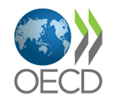Foods methods deal with a challenging triple obstacle necessitating governments to take a far more holistic approach

Foodstuff devices confront the triple challenge of offering meals protection and nourishment for a developing international populace, and livelihoods to farmers and many others functioning in food stuff offer chains all over the world, all although improving upon environmental sustainability.
Presented the deep connections concerning these goals, governments can do much a lot more to take into account the synergies and trade-offs that exist concerning the various places, as properly as the challenges for acquiring much more coherent policy, in accordance to a new OECD report.
Producing Better Procedures for Food stuff Devices brings alongside one another a long time of OECD analysis and plan suggestions on meals methods. The report underlines the very long track document furnishing facts, proof and policy recommendations on subject areas ranging from agricultural productiveness and trade to obesity, h2o use, rural advancement and international value chains. It notes that these and other subjects have been generally viewed as in isolation, fairly than as parts of broader food stuff systems policies.
The centrality of food stuff systems for the Sustainable Growth Targets has led the UN to convene a Food stuff Programs Summit in September 2021. Advancement of a new “food techniques technique,” able of at the same time creating progress on the three dimensions of food safety/nourishment, livelihoods and environmental sustainability, will have to have superior coordination in between coverage makers in a variety of sectors, together with agriculture, fisheries, surroundings and general public overall health, in accordance to the OECD report.
This new approach will have to have policymakers to acquire a holistic watch on foodstuff technique targets, as perfectly as new endeavours to prevent incoherent policies. In exercise, this would necessarily mean that agricultural policymakers – who have traditionally focussed on agricultural manufacturing – would location a higher emphasis on the attainable consequences of farm guidelines on dietary and environmental outcomes. Likewise, where by environmental challenges relevant to agriculture have in the earlier been tackled by way of agri-environmental procedures, a foodstuff units strategy opens the chance to use other instruments, this sort of as individuals that encourage modifications in consumer or business conduct.
A food items techniques-based mostly method recognises the complexity of opportunity synergies and trade-offs amongst meals safety and diet, livelihoods and environmental sustainability. Rising desire for some meals products may possibly benefit producers in weak international locations even though concurrently bringing detrimental environmental effects. Modifications in food stuff prices could profit producers even though harming poorer customers. Problems fluctuate enormously involving smallholder farmers in building international locations, all those doing substantial grazing-based farming and higher-tech farmers in innovative economies.
This complexity will have to have tailored and multi-dimensional procedures, centered on robust, evidence-based mostly and inclusive policy procedures. The OECD highlights the distinct will need to reform agricultural and fisheries assist insurance policies that are the most distorting and which build adverse environmental consequences. Further than that, earning far better policies for food stuff units will call for beating disagreements on facts, but also diverging passions and differing values amid stakeholders, in accordance to the report.
Situation research on the seed sector, the ruminant livestock sector and the processed foodstuff sector present in-depth dialogue of how just about every can help tackle the triple problem, the synergies and trade-offs that exist, as very well as the differing coverage processes that have been applied in several nations around the world.
The report focuses on three parts:
• the true overall performance of foodstuff systems, and the function of coverage
• how policymakers can design and style food items devices procedures using into account the three dimensions of food stuff safety/nutrition, livelihoods and environmental sustainability and
• the prevalent factors complicating efforts to design improved food items program procedures, and likely alternatives.
Resource: OECD







